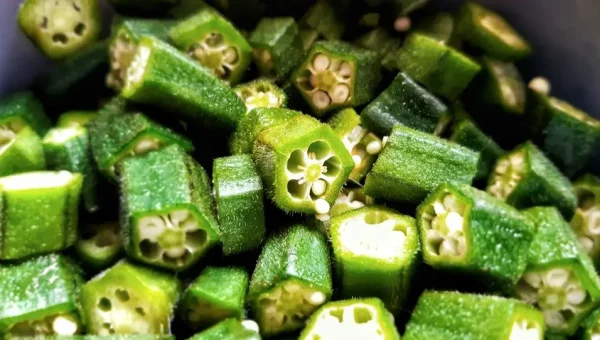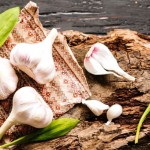How to Make Okra Water And Why It’s Worth Trying
Warning: Undefined variable $post in /home/dietofli/public_html/wp-content/plugins/code-snippets/php/snippet-ops.php(663) : eval()'d code on line 3
Warning: Attempt to read property "ID" on null in /home/dietofli/public_html/wp-content/plugins/code-snippets/php/snippet-ops.php(663) : eval()'d code on line 3
The estimated reading time is 5 minutes
Warning: Undefined variable $post in /home/dietofli/public_html/wp-content/plugins/oxygen/component-framework/components/classes/code-block.class.php(115) : eval()'d code on line 3
Warning: Attempt to read property "ID" on null in /home/dietofli/public_html/wp-content/plugins/oxygen/component-framework/components/classes/code-block.class.php(115) : eval()'d code on line 3

Only about 1 in 10 adults eat enough vegetables each day, and most people aren’t picking okra when they do. That’s a shame, because this odd-looking green pod might quietly be one of the most underrated health boosters you can drink—yes, drink.
Most people know okra by its nicknames. lady’s fingers or bamya, and either love it or avoid it entirely. Its soft, slightly slippery texture can put some people off, but this humble green pod has been used for centuries in traditional cooking and medicine. What many don’t realize is that you don’t have to eat okra to benefit from it. A simple glass of okra water could give your body a boost in ways you might not expect.
Okra, or Abelmoschus esculentus, grows best in warm, tropical climates. Inside its ridged green pods are tiny seeds surrounded by a natural gel-like substance. That gel is what makes it a favorite thickener for soups and stews, but it also contains a range of nutrients—vitamins B and C, potassium, calcium, and folic acid—that support overall health. Scientists have been taking a closer look at what this vegetable can do, and the results are worth noting.
1. A Natural Fiber Boost
If you’ve been told to “eat more fiber,” okra might be your new best friend. Its high fiber content supports a healthy digestive system by helping food move through smoothly and preventing that sluggish, bloated feeling. Fiber also helps you feel full for longer, which can cut down on between-meal snacking.
Research suggests that a diet rich in fiber may help keep blood sugar levels steady. That’s because fiber slows down how quickly sugar enters your bloodstream, reducing those spikes and crashes that leave you feeling tired or irritable.
Take someone like Taylor, a teacher who struggled with mid-afternoon energy dips. By adding a few servings of fiber-rich foods—including okra—to her week, she noticed her energy stayed more consistent.
2. More Stamina, Less Fatigue
Okra’s benefits aren’t limited to digestion. A 2015 study in Nutrients found that when combined with regular exercise, okra could help improve endurance and reduce fatigue. Participants who incorporated it into their diet were able to work out longer before feeling tired and bounced back faster afterward.
That means whether you’re training for a 10K or just trying to get through a demanding workday without crashing, okra might give you that extra push.
3. Possible Stress Reduction
Modern life can be exhausting, mentally and emotionally. While there’s no magic vegetable to erase stress completely, okra seeds contain antioxidants that researchers believe may have anti-stress properties.
One study in The Scientific World Journal showed these effects in mice, and while human research is still catching up, antioxidants are already known for protecting cells from damage and supporting brain health. Including okra in your diet is a low-effort way to add more of these protective compounds to your system.
4. Potential Blood Sugar Support
High blood sugar isn’t just a concern for people with diabetes—it can affect energy, focus, and long-term health for anyone. A study in the Asian Pacific Journal of Tropical Medicine found that okra extract helped reduce blood sugar levels in diabetic mice.
While we can’t directly apply those results to humans without more research, the combination of fiber and antioxidants in okra is promising for anyone aiming to keep their blood sugar in check. And since okra water is easy to prepare, it’s a low-cost experiment you can try at home alongside a balanced diet.
How to Make Okra Water
If you’re not a fan of okra’s taste or texture, okra water is a simple alternative. All you need is:
- 3 to 5 fresh okra pods
- 1 glass of water
Steps:
- Rinse the pods well to remove any dirt.
- Slice off the ends, or leave them whole if you prefer a milder flavor.
- Place them in the glass of water and let them soak overnight.
- In the morning, remove the pods and drink the infused water.
For a stronger flavor and possibly more nutrients, slice the pods before soaking. This will release more of the gel into the water, making it slightly thicker and more bitter.
Why It’s Worth Trying
Okra water isn’t a miracle cure, but it’s a nutrient-packed drink that can fit easily into most routines. It’s inexpensive, widely available, and simple to prepare. If you’re already trying to improve your digestion, energy, or overall nutrition, it’s a small change that could make a noticeable difference over time.
The key is consistency—adding it a few times a week while keeping the rest of your diet balanced will give you the best chance to see results.
Final Thought:
Okra may never be the most glamorous vegetable, but sometimes the most unassuming foods have the biggest benefits. Whether you’re cooking it in gumbo or sipping it as okra water, you’re giving your body something valuable: natural nutrients, steady energy, and gentle support for your health goals.
Sources:
-
Fan, S., et al. (2015). Protective Effect of Okra (Abelmoschus esculentus) on Fatigue in Mice. Nutrients, 7(12), 9675–9686. https://doi.org/10.3390/nu712594
-
Gemede, H. F., & Ratta, N. (2015). Antinutritional Factors in Plant Foods: Potential Health Benefits and Adverse Effects. International Journal of Nutrition and Food Sciences, 4(4), 284–289. (Section on okra and fiber benefits) https://doi.org/10.1168/j.ijnfs.20150404.1














